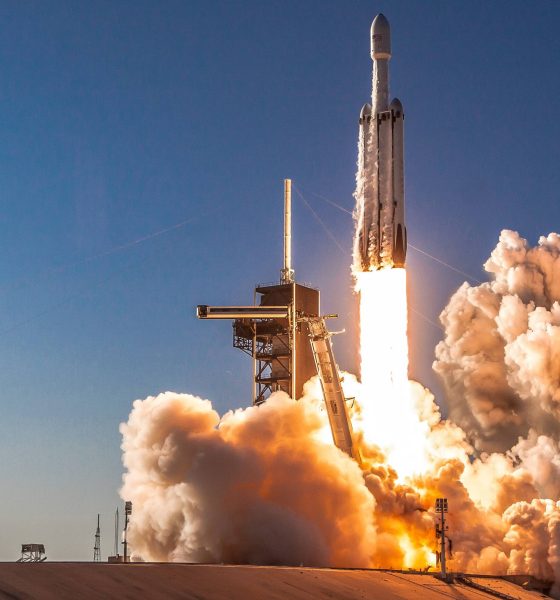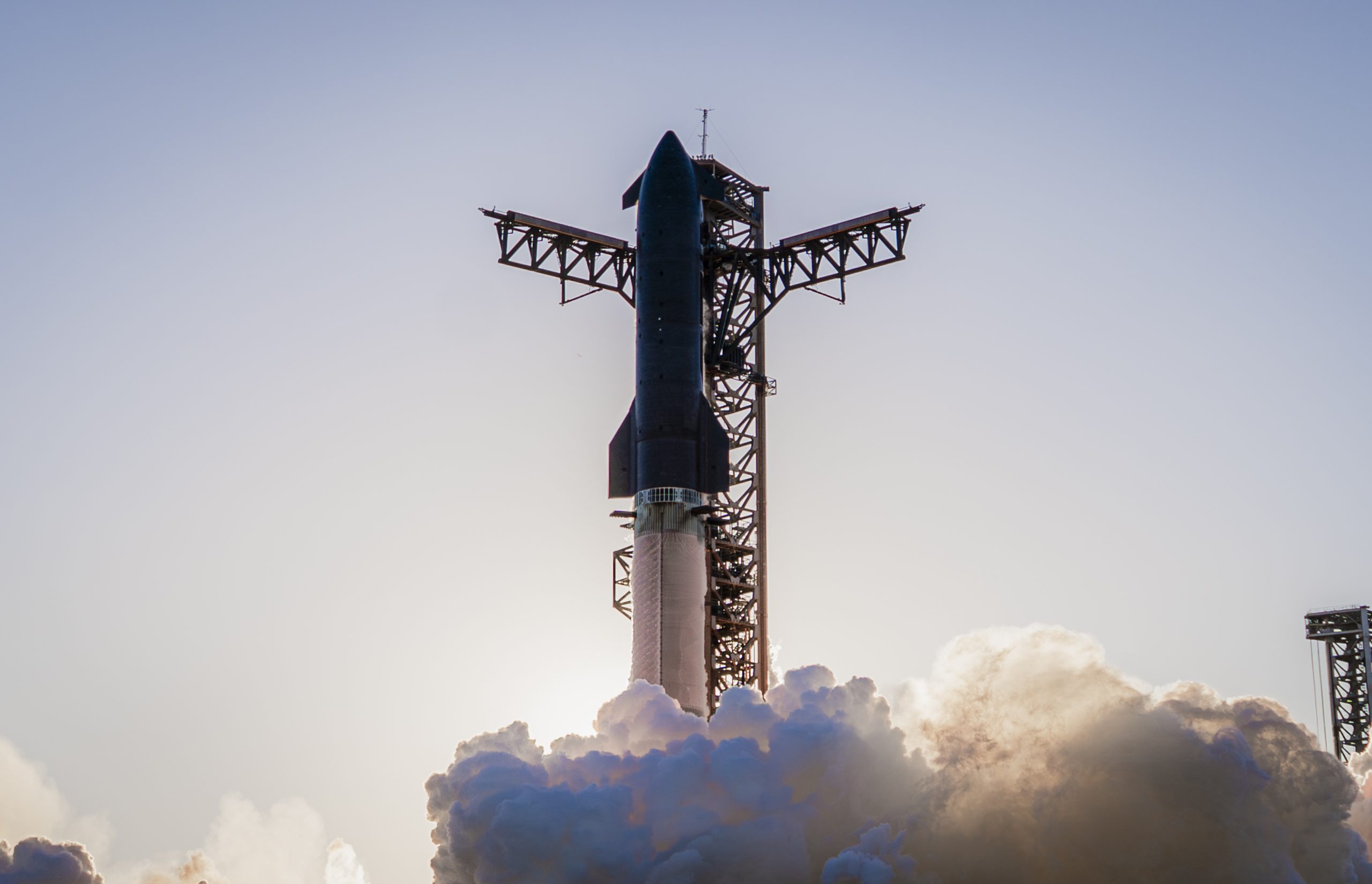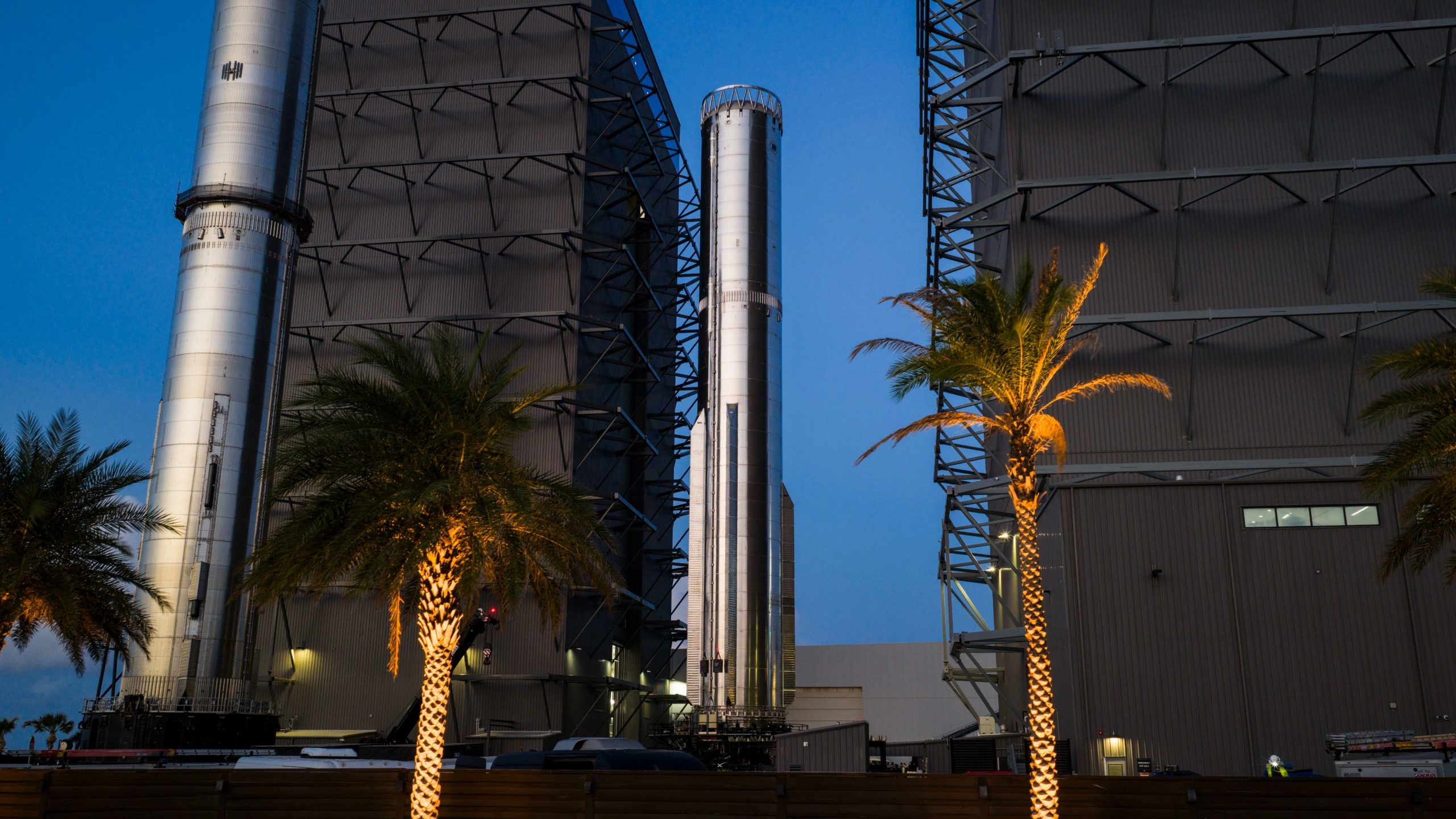

SpaceX
SpaceX preps for Cargo Dragon, Falcon Heavy launches despite setbacks
Despite suffering the loss of the first Falcon Heavy Block 5 center core and a catastrophic failure of the first flight-proven Crew Dragon spacecraft in nearly the same week, SpaceX’s core operations continue as usual to prepare for multiple launches in the coming months.
The echoes of the past week’s failures and ‘anomalies’ will undoubtedly ring for months to come but SpaceX now finds itself in a unique situation. Despite the imminent start of a major failure investigation, it appears unlikely – at least for the time being – that it will impact the majority of Falcon 9 and Falcon Heavy launches planned for the rest of 2019. Currently on the Q2 2019 manifest are Cargo Dragon’s 17th operational mission (CRS-17), the first operational Starlink launch, Spacecom’s Amos-17 satellite, the Canadian Radarsat Constellation Mission (RCM), and Falcon Heavy’s third launch (STP-2).
Cargo Dragon – CRS-17
Following an April 20th explosion that destroyed Crew Dragon C201, SpaceX’s next launch – Cargo Dragon CRS-17 – has likely just become the most important in the near-term. Although Crew Dragon shares almost nothing directly in common with Cargo Dragon, both spacecraft still do come from the same lineage, relying on the same propellant and Draco maneuvering thrusters, as well as similar plumbing (excluding SuperDraco pods) and many of the same engineers and technicians.
On the other hand, Cargo Dragon has never suffered a catastrophic anomaly on the ground or in flight, although SpaceX has dealt with a fair share of less serious issues throughout the spacecraft’s operational life. Further, following the August 2017 launch of CRS-12, every CRS mission has launched with a flight-proven Cargo Dragon spacecraft. In fact, it’s quite likely that the CRS-12 Cargo Dragon capsule is the same spacecraft that has been refurbished for CRS-17, as it is currently the only flightworthy capsule to have only flown one orbital resupply mission.
It’s unclear which Falcon 9 booster has been assigned to CRS-17. NASA’s agreement with SpaceX for flight-proven boosters has been predicated on keeping those boosters ‘in-family’, so to speak, meaning that NASA will only accept flight-proven boosters if they have only flown NASA missions. The only booster that currently fits that bill is B1051, previously flown during Crew Dragon’s orbital launch debut on March 2nd, but B1051 has reportedly been assigned to SpaceX’s second Vandenberg launch of 2019 at the customer’s request. CRS-17 will thus likely launch on a new Falcon 9 booster (B1056). There is a chance that Crew Dragon’s catastrophic failure has severely contaminated the Landing Zone area with unburnt MMH and NTO, both of which are extraordinarily toxic to humans in even the tiniest of quantities.
Some launch-related questions may be answered in a NASA media briefing planned for 11am EDT, April 22nd. CRS-17 is scheduled to launch no earlier than 4:22 am EDT (08:22 UTC), April 30th.


Starlink, Falcon Heavy, and more
Meanwhile, the Falcon upper/second stage (S2) spotted in the tweet at the top of the article serves as evidence of preparations for launches planned in May/June, as do a duo of first stage boosters spied during their own Cape Canaveral arrivals. All that’s missing to round out a busy week of SpaceX transportation is the appearance of one or several payload fairings, although CEO Elon Musk says that the company will try to reuse Falcon Heavy Flight 2’s fairing on the first Starlink launch.
Said Starlink launch – unofficially labeled Starlink-1 – is currently scheduled for liftoff no earlier than mid-May, likely making it the SpaceX mission that will follow CRS-17. The most likely Falcon 9 S1 candidate is the thrice-flown Block 5 booster B1046, a move that would retire risk otherwise transmitted to customers. SpaceX has now flown two separate Falcon 9 boosters (B1046 and B1048) three times without major issue, meaning that the fourth flight of the same booster (and beyond) will be new territory for reuse at some level.


Beyond Starlink-1, SpaceX has the communications satellite Amos-17 and Radarsat Constellation Mission (RCM), both of which are understood to be targeting launch no earlier than (NET) early June. Finally, Falcon Heavy Flight 3 – carrying the US Air Force’s STP-2 mission – is scheduled to launch NET June 22nd, although some additional delays are probable.
From a business-as-usual perspective, the fact that Crew Dragon C201 failed during intentional testing on the ground means that it will likely be SpaceX’s least commercially disruptive failure yet. This could change for any number of reasons, depending on the conclusions drawn by the joint NASA-SpaceX investigation soon to begin, and it’s far too early to draw far-reaching conclusions. Chances are good that the impact to non-Crew Dragon launches will be minimal but only time will tell as SpaceX begins to quite literally pick up the pieces and start a deep-dive analysis of all data gathered from Saturday’s failure.
Check out Teslarati’s Marketplace! We offer Tesla accessories, including for the Tesla Cybertruck and Tesla Model 3.

Elon Musk
SpaceX maintains unbelievable Starship target despite Booster 18 incident
It appears that it will take more than an anomaly to stop SpaceX’s march towards Starship V3’s refinement.

SpaceX recently shared an incredibly ambitious and bold update about Starship V3’s 12th test flight.
Despite the anomaly that damaged Booster 18, SpaceX maintained that it was still following its plans for the upgraded spacecraft and booster for the coming months. Needless to say, it appears that it will take more than an anomaly to stop SpaceX’s march towards Starship V3’s refinement.
Starship V3 is still on a rapid development path
SpaceX’s update was posted through the private space company’s official account on social media platform X. As per the company, “the Starbase team plans to have the next Super Heavy booster stacked in December, which puts it on pace with the test schedule planned for the first Starship V3 vehicle and associated ground systems.”
SpaceX then announced that Starship V3’s maiden flight is still expected to happen early next year. “Starship’s twelfth flight test remains targeted for the first quarter of 2026,” the company wrote in its post on X.
Elon Musk mentioned a similar timeline on X earlier this year. In the lead up to Starshp Flight 11, which proved flawless, Musk stated that “Starship V3 is a massive upgrade from the current V2 and should be through production and testing by end of year, with heavy flight activity next year.” Musk has also mentioned that Starship V3 should be good enough to use for initial Mars missions.
Booster 18 failure not slowing Starship V3’s schedule
SpaceX’s bold update came after Booster 18 experienced a major anomaly during gas system pressure testing at SpaceX’s Massey facility in Starbase, Texas. SpaceX confirmed in a post on X that no propellant was loaded, no engines were installed, and personnel were positioned at a safe distance when the booster’s lower section crumpled, resulting in no injuries.
Still, livestream footage showed significant damage around the liquid oxygen tank area of Booster 18, leading observers to speculate that the booster was a total loss. Booster 18 was among the earliest vehicles in the Starship V3 series, making the failure notable. Despite the setback, Starship V3’s development plans appear unchanged, with SpaceX pushing ahead of its Q1 2026 test flight target.
Elon Musk
SpaceX issues statement on Starship V3 Booster 18 anomaly
The incident unfolded during gas-system pressure testing at the company’s Massey facility in Starbase, Texas.

SpaceX has issued an initial statement about Starship Booster 18’s anomaly early Friday. The incident unfolded during gas-system pressure testing at the company’s Massey facility in Starbase, Texas.
SpaceX’s initial comment
As per SpaceX in a post on its official account on social media platform X, Booster 18 was undergoing gas system pressure tests when the anomaly happened. Despite the nature of the incident, the company emphasized that no propellant was loaded, no engines were installed, and personnel were kept at a safe distance from the booster, resulting in zero injuries.
“Booster 18 suffered an anomaly during gas system pressure testing that we were conducting in advance of structural proof testing. No propellant was on the vehicle, and engines were not yet installed. The teams need time to investigate before we are confident of the cause. No one was injured as we maintain a safe distance for personnel during this type of testing. The site remains clear and we are working plans to safely reenter the site,” SpaceX wrote in its post on X.
Incident and aftermath
Livestream footage from LabPadre showed Booster 18’s lower half crumpling around the liquid oxygen tank area at approximately 4:04 a.m. CT. Subsequent images posted by on-site observers revealed extensive deformation across the booster’s lower structure. Needless to say, spaceflight observers have noted that Booster 18 would likely be a complete loss due to its anomaly.
Booster 18 had rolled out only a day earlier and was one of the first vehicles in the Starship V3 program. The V3 series incorporates structural reinforcements and reliability upgrades intended to prepare Starship for rapid-reuse testing and eventual tower-catch operations. Elon Musk has been optimistic about Starship V3, previously noting on X that the spacecraft might be able to complete initial missions to Mars.
Elon Musk
SpaceX Starship Version 3 booster crumples in early testing
Photos of the incident’s aftermath suggest that Booster 18 will likely be retired.

SpaceX’s new Starship first-stage booster, Booster 18, suffered major damage early Friday during its first round of testing in Starbase, Texas, just one day after rolling out of the factory.
Based on videos of the incident, the lower section of the rocket booster appeared to crumple during a pressurization test. Photos of the incident’s aftermath suggest that Booster 18 will likely be retired.
Booster test failure
SpaceX began structural and propellant-system verification tests on Booster 18 Thursday night at the Massey’s Test Site, only a few miles from Starbase’s production facilities, as noted in an Ars Technica report. At 4:04 a.m. CT on Friday, a livestream from LabPadre Space captured the booster’s lower half experiencing a sudden destructive event around its liquid oxygen tank section. Post-incident images, shared on X by @StarshipGazer, showed notable deformation in the booster’s lower structure.
Neither SpaceX nor Elon Musk had commented as of Friday morning, but the vehicle’s condition suggests it is likely a complete loss. This is quite unfortunate, as Booster 18 is already part of the Starship V3 program, which includes design fixes and upgrades intended to improve reliability. While SpaceX maintains a rather rapid Starship production line in Starbase, Booster 18 was generally expected to validate the improvements implemented in the V3 program.
Tight deadlines
SpaceX needs Starship boosters and upper stages to begin demonstrating rapid reuse, tower catches, and early operational Starlink missions over the next two years. More critically, NASA’s Artemis program depends on an on-orbit refueling test in the second half of 2026, a requirement for the vehicle’s expected crewed lunar landing around 2028.
While SpaceX is known for diagnosing failures quickly and returning to testing at unmatched speed, losing the newest-generation booster at the very start of its campaign highlights the immense challenge involved in scaling Starship into a reliable, high-cadence launch system. SpaceX, however, is known for getting things done quickly, so it would not be a surprise if the company manages to figure out what happened to Booster 18 in the near future.








